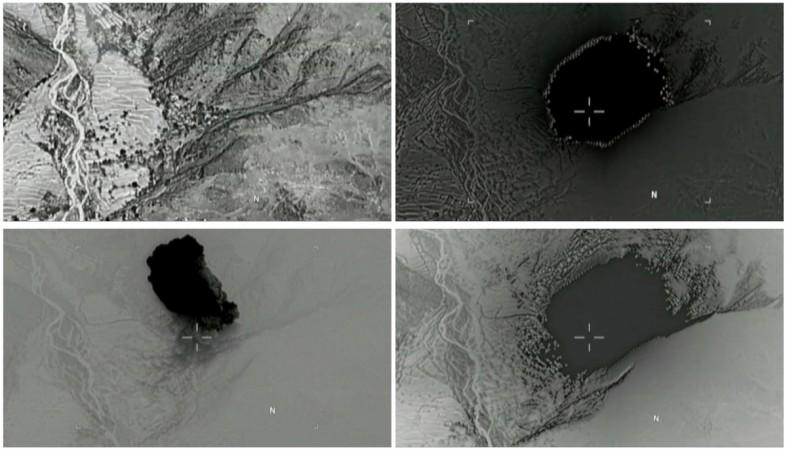
At least 13 Indians were among the 90-odd people killed by the GBU-43 Massive Ordnance Air Blast Bomb (MOAB) the United States dropped on Afghanistan last week, according to an Afghan news agency. The bomb had targeted the Islamic State group — also known as the Islamic State of Iraq and Syria (ISIS) or the Islamic State of Iraq and the Levant (ISIL).
There had already been suspicion that at least one Indian ISIS recruit from Kerala had been killed in the bombing. However, the aforementioned Afghan news agency, using the Arabic name for ISIS and quoting Afghan security sources, said: "13 Indian Daesh militants were also among those killed in the attack. Daesh commanders Mohammad and Allah Gupta were from India."
Flash: An #Afghan security source confirmed death of 13 Indians in #MOAB attack in #Achin.
— Pajhwok Afghan News (@pajhwok) April 18, 2017
ISIS Khorasan province
The target of the dropping of reportedly the largest non-nuclear bomb in the world was the Wilayat Khorasan of Islamic State in Afghanistan, also known as the ISIS Khorasan Province, and ISIS-K for short. It was formally announced by ISIS in early 2015, and consists primarily of militants who have defected from various local outfits, including the Tehreek-i-Taliban Pakistan (TTP) or the Pakistani Taliban.
With ISIS militants being constantly driven out of their strongholds in Iraq and Syria, there had been fears that they would find another country to rebuild the terrorist organisation. Iran and Russia had warned last year that Afghanistan would be that country. The UN had added fuel to that fire of speculation by adding earlier this year that the ISIS was recruiting militants from the Afghanistan-Pakistan border.
Bombing is good news for India?
The USA's dropping the MOAB on ISIS-K could be good news for India. ISIS-K modules have already been detected and neautralised within the country. Now, with the US targeting ISIS-K at the root, India may be able to see a two-fold advantage.
For one, the deaths could deter impressionable youngsters India from joining a terrorist group for fear that they would meet the same fate. Additionally, with the US now focusing on ISIS-K, there will be increased scrutiny of their activities, which could lead to a drop in the activities of modules of the terrorist outfit in India. The US scrutiny could also prevent terror attacks in India if the intel-sharing process continues unimpeded.
Some channels unaffected?
However, a total end of youths from India — especially Kerala — being recruited by ISIS may be further off, because of where, when and how they are being recruited. Educated Muslim youngsters from Kerala are reportedly being recruited from Gulf countries, where they go to work. That is one area where the Indian intelligence agencies and the defence establishment need to work on to ensure that local youths do not become radicalised and turn into terrorists.
Defence analyst Lt Gen HS Panag (retired) pointed out another aspect of ISIS recruitment: "Whenever there is crackdown on organisations like LTTE and ISIS, the martyr syndrome comes into play, with recruiters picking up more and more youngsters by motivating them to die for their cause."
He added: "However, ISIS has managed to pick up Indian youngsters mostly from Kerala because they are educated and Internet-savvy enough to gain access to ISIS literature available online. That is not true for the rest of the country, so ISIS influence may be limited to a select few in India.








